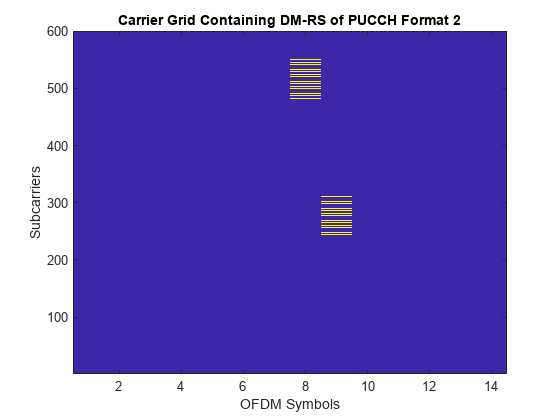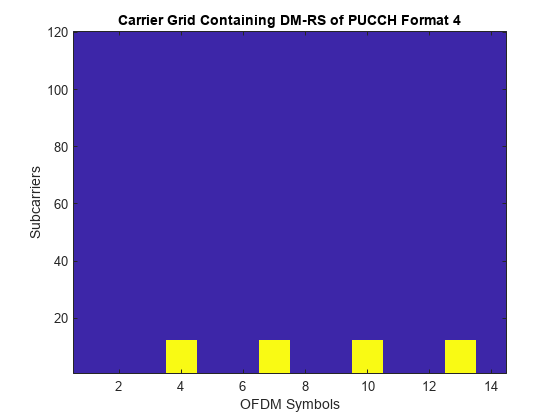nrPUCCHDMRS
Description
sym = nrPUCCHDMRS(carrier,pucch)sym, which contains demodulation reference signal (DM-RS)
symbols of a physical uplink control channel (PUCCH), as defined in TS 38.211 Section
6.4.1.3 [1], for all PUCCH formats.
carrier specifies the carrier configuration.
pucch specifies the PUCCH configuration. For PUCCH formats 1, 3, and
4, setting the GroupHopping property of pucch is
set to 'disable' enables sequence hopping. In this case, the function
selects a sequence number, which might be inappropriate for short base sequences. For PUCCH
format 0, the function returns an empty value for sym.
Examples
Input Arguments
Output Arguments
References
[1] 3GPP TS 38.211. “NR; Physical channels and modulation.” 3rd Generation Partnership Project; Technical Specification Group Radio Access Network.

